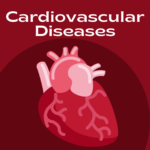Peripheral Artery Disease (PAD) is a common circulatory condition that affects millions of people, particularly those over the age of 50. It occurs when arteries in the legs become narrowed or blocked due to the buildup of fatty deposits, reducing blood flow to the extremities. Understanding the symptoms, diagnosis, and treatment options for PAD is crucial for managing this condition effectively.
Symptoms of PAD:
PAD often develops gradually, and its symptoms may not be immediately apparent. However, common signs and symptoms include:
- Leg Pain: The most prevalent symptom is intermittent claudication, characterized by cramping, pain, or weakness in the legs during physical activity. This discomfort typically subsides with rest.
- Numbness or Weakness: Some individuals may experience numbness or weakness in the legs.
- Coldness or Discoloration: The affected leg may feel colder to the touch and appear pale or bluish.
- Slower Growth of Toenails: Reduced blood flow can affect nail growth in the affected leg.
- Wounds that Don’t Heal: PAD can cause wounds or ulcers on the legs or feet that heal slowly or not at all.
- Gangrene: In severe cases, untreated PAD can lead to tissue death (gangrene), which is a medical emergency.
Diagnosis:
A healthcare provider can diagnose PAD through a combination of medical history, physical examination, and specialized tests, such as:
- Ankle-Brachial Index (ABI): This test compares blood pressure measurements in the arms and legs to assess blood flow.
- Doppler Ultrasound: Sound waves are used to create images of blood flow in the arteries.
- Angiography: A contrast dye and X-rays are used to visualize blood flow in the arteries.
- Magnetic Resonance Angiography (MRA): MRI technology is used to produce detailed images of the blood vessels.
Treatment Options:
Managing PAD typically involves a combination of lifestyle changes, medications, and, in some cases, surgical procedures:
- Lifestyle Modifications: Quitting smoking, adopting a heart-healthy diet, maintaining a healthy weight, and engaging in regular exercise can improve blood flow and reduce symptoms.
- Medications: Blood-thinning medications, cholesterol-lowering drugs, and medications to manage blood pressure may be prescribed.
- Angioplasty and Stenting: In cases of severe blockages, a minimally invasive procedure called angioplasty can be performed to open the narrowed artery. A stent may be inserted to keep the artery open.
- Bypass Surgery: For advanced cases, a surgical bypass may be necessary to redirect blood flow around the blocked artery.
- Wound Care: Proper wound care is essential for preventing infections in cases of ulcers or open sores.
- Exercise Therapy: Supervised exercise programs can help improve symptoms and walking ability.
In conclusion, PAD is a common vascular condition that affects the circulation in the legs. Early diagnosis and a comprehensive treatment plan, including lifestyle changes and medical interventions, can significantly improve the quality of life for individuals with PAD and reduce the risk of complications. If you experience symptoms of PAD, seek prompt medical attention for a proper evaluation and personalized treatment plan.








